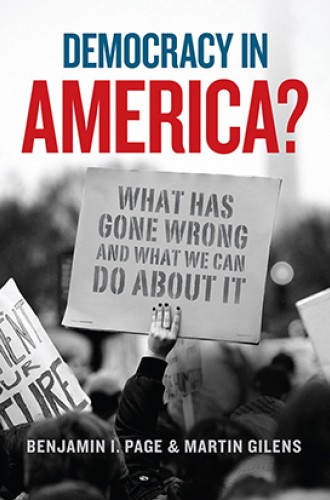Is our democracy doomed to become more and more exclusionary?
Benjamin Page and Martin Gilens offer a discouraging diagnosis—and some specific remedies.
Is democracy in peril? A veritable subgenre of books has developed on that question. In How Democracies Die, Steven Levitsky and Daniel Ziblatt show how a series of small shifts in norms and legal frameworks can combine to undermine a democratic system. Yascha Mounk argues in The People vs. Democracy that mass commitment to the institutions of democracy is breaking down not only in the United States but around the world. Amy Chua’s Political Tribes points to hyper-partisanship and cultural tribalism as the gateway to the demise of democratic systems.
Benjamin Page and Martin Gilens argue that although the United States may formally be an institutional democracy, in practice it is an exclusionary democracy: equal rights are enshrined on paper, but a variety of groups are routinely excluded and politically marginalized. They catalog a litany of failures in American democracy which are rooted in political and economic inequality, arguing that extreme economic inequality “undermines the very democratic political processes that ordinary citizens rely on to ameliorate economic inequality. In short, economic inequality and democracy are in serious conflict.”
Over the past 40 years, the concentration of economic wealth in the United States has indeed become extreme. A small sliver of those at the top of the economic heap has pulled away from everyone else. According to Page and Gilens, this economic separation has fractured democracy. Using a mountain of data, they show that the rich are much more likely than the poor to get what they want from government. “The best evidence indicates that the wishes of ordinary Americans actually have had little or no influence at all on the making of federal government policy. . . . The general public has been virtually powerless.”






